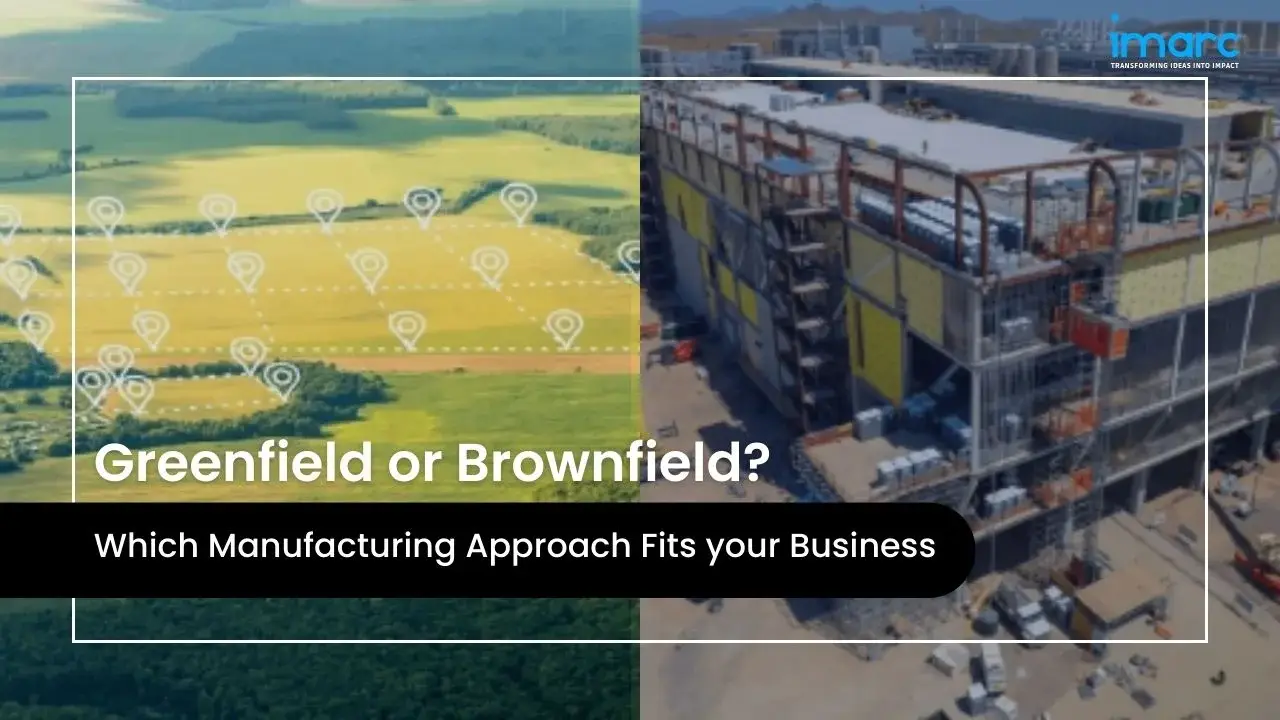Greenfield or Brownfield? Which Manufacturing Approach Fits Your Business

The manufacturing sector is constantly changing with continuously rising demands for sustainability, innovation, and efficiency. The time comes when companies want to expand their business or venture into new markets. They then come across the difficult choice of opting for a Greenfield or Brownfield project. Both projects possess unique strengths and weaknesses, and the difference between them must be understood by businesses in order to make the correct choice.
In this blog, we will discuss the major differences between Greenfield and Brownfield projects, including their advantages and disadvantages, best usage, and strategic implications for the manufacturing sector.
What is a Greenfield Project?
Greenfield project refers to the construction of a new factory or plant on land that was not used previously. In this scenario, the company is essentially beginning from the ground up with no facilities and infrastructure present. The term "greenfield" applies because the land is typically clear of any buildings and industrial utilization present previously so businesses are able to construct and design their plant to the latest standards and specifications. This approach provides greater flexibility in planning and technology integration, allowing companies to adopt innovative designs and modern sustainability practices.
Key Features of Greenfield Projects:
- New Construction: Companies build their manufacturing unit from the ground up, with full control over design, layout, and technology.
- Undeveloped Land: The project takes place on land that has not been previously developed for industrial purposes.
- Freedom of Innovation: There is flexibility in choosing modern infrastructure, machinery, and energy-efficient technologies.
What is a Brownfield Project?
A Brownfield project is the redevelopment or enlargement of a current facility. It might mean revamping and upgrading outdated manufacturing plants, reusing old buildings, or enlarging on land previously used by industrial processes. Brownfield projects tend to necessitate an emphasis on improving existing structures and equipment to satisfy current needs and environmental conditions.
Key Features of Brownfield Projects:
- Existing Infrastructure: Brownfield projects build upon or modify existing manufacturing facilities, reducing the need for complete construction.
- Redevelopment or Expansion: Companies may renovate existing facilities or extend their capabilities by adding new production lines or technologies.
- Limited Construction Flexibility: The design and development are often constrained by the existing facility's size, layout, and location.
Greenfield vs. Brownfield Projects: Key Differences
| Parameter | Greenfield Project | Brownfield Project |
|---|---|---|
| Land | Constructed on undeveloped or "green" land | Built on land that has been previously used for industrial purposes |
| Construction | Complete new construction, offering total design flexibility | Limited by existing infrastructure; often involves upgrades, expansions, or repurposing old facilities |
| Cost | Higher initial costs due to land acquisition, permits, construction, and setup from scratch | Lower upfront costs due to existing infrastructure; only upgrades and expansions are required |
| Timeline | Longer timeline as it involves land acquisition, construction, and full setup of operations | Shorter timeline as much of the infrastructure and equipment may already be in place |
| Innovation | High level of flexibility for incorporating modern technologies, sustainability features, and design innovations | May face limitations in incorporating modern technologies due to the constraints of existing facilities |
| Regulatory & Permits | Requires new permits and regulatory approvals for construction, environmental impact, and zoning | Typically, fewer new regulatory hurdles as the land have already been zoned for industrial use |
| Risk | Higher risk as there are uncertainties related to land development, construction delays, and new infrastructure | Lower risk as the business is building on existing operations with a known history |
Advantages and Challenges of Greenfield & Brownfield Projects:
| Project | Advantages | Challenges |
|---|---|---|
| Greenfield Projects |
|
|
| Brownfield Projects |
|
|
Which Project Type is Right for You?
- The decision between Greenfield and Brownfield projects is heavily influenced by the business's specific needs and strategic goals. For companies that desire complete control of their facility appreciating the newest technologies and willing to invest significant capital in the initial stage a Greenfield project may be ideal. It is the best choice for companies entering new markets or a new industry where the infrastructure must be specifically designed to provide optimum performance.
- On the other hand, Brownfield projects tend to be more appropriate for organizations where there is an intention to increase or upgrade current operations with reduced investment expenditures and shorter implementation periods. If the firm is situated in an area with existing infrastructure or to rapidly increase manufacturing, then a Brownfield project will have the optimal return on investment.
Both Brownfield and Greenfield projects have their respective strengths and the decision between the two should be influenced by budget, deadline, long-term objectives, and the extent of innovation involved. Although Greenfield projects provide the flexibility and room for integration of newer technology, Brownfield projects provide cost and time savings utilizing existing infrastructure. Ultimately, knowledge of the advantages, disadvantages, and strategic alignment of each will enable companies to make a more educated and lucrative choice.
Our Clients
Contact Us
Have a question or need assistance?
Please complete the form with your inquiry or reach out to us at
Phone Number
+91-120-433-0800+1-201-971-6302
+44-753-714-6104










